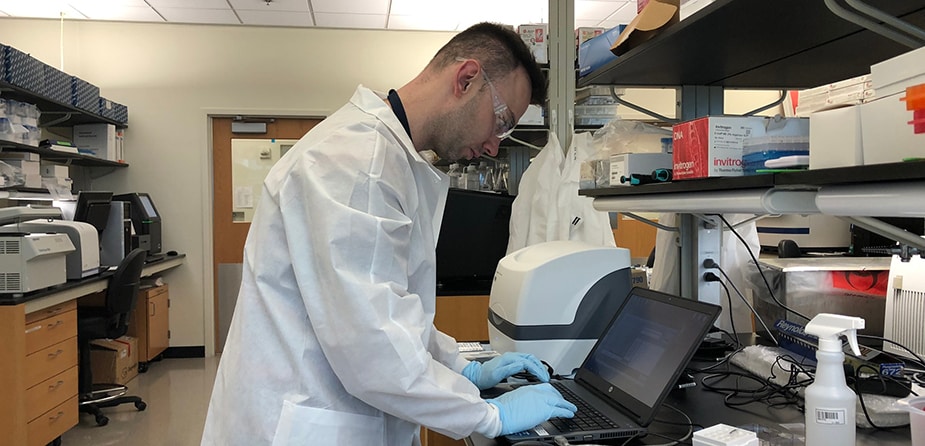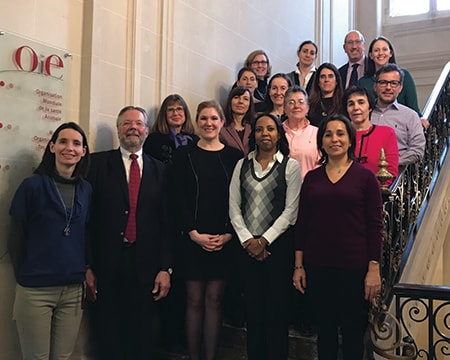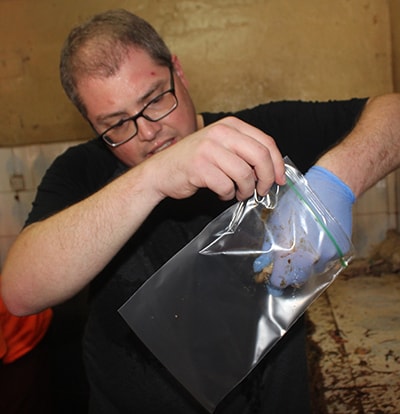Closing Critical Gaps in Laboratory Leadership
April 30, 2019

John Saindon in action during CDC Hepatitis A response. Photo: CDC EOC
Without an effective laboratory system in place, experts working in the field could wait weeks for the results of crucial tests, delaying outbreak response and risking lives.
Leadership and laboratories are seldom spoken of in the same breath or considered to complement each other. Yet public health laboratories, which conduct their work in disease surveillance and biosecurity behind the scenes, owe much of their success to effective leaders and collaborative systems.
Without an effective laboratory system in place, experts working in the field could wait weeks for the results of crucial tests, delaying outbreak response and risking lives. The 2014-2016 Ebola outbreak in West Africa was the wakeup call that finally connected the dots about how crucial it is to merge scientific expertise with strong leadership skills.

Global Laboratory Leadership Programme Partners Meeting, January, 2019. Photo: Alex Ginzberg
Often, laboratory directors and senior laboratory managers lack training in leadership and management, skills needed to develop and lead effective laboratory systems for disease surveillance and response. To fill this critical gap, CDC, the World Health Organization (WHO), and the Association of Public Health Laboratories (APHL) worked together to describe what constitutes successful laboratory leadership. In 2017, the collaboration was expanded to include the European Centre for Disease Prevention and Control (ECDC), the Food and Agriculture Organization of the United Nations (FAO), and the World Organization for Animal Health (OIE).
Together these leading international organizations partnered to develop the Global Laboratory Leadership Programme (GLLP). Each of the partners has extensive experience in laboratory strengthening within their respective mandates, and together they provide a unique, multi-sectoral perspective on improving laboratory systems. While still young, this collaboration is strong in its commitment to strengthening laboratory systems by addressing gaps in laboratory leadership across all sectors.
“The promise and power of the GLLP is because of this partnership. The expertise and experience provided by each of these organizations is complementary and fosters the use of best practices—a true win-win situation for developing laboratory leaders to meet global needs,” said CDC’s Leonard Peruski.
DEVELOPING EFFECTIVE LAB LEADERS

CDC's Matt Mikoleit collecting chicken samples at a shop in Kenya. Photo: Justin Williams
GLLP is based on the Laboratory Leadership Competency Framework and uses a standard curriculum, built to be flexible and adaptable to country needs. GLLP consists of an implementation framework designed to transform laboratory directors and senior managers into effective leaders who can manage laboratories under any circumstances, determine appropriate laboratory diagnostics, and build strong collaborative networks with relevant sectors at every level of the health system. Program participants will be mentored in a variety of skills related to leadership, management, communication, quality system management, and biosecurity, addressing the entire national health laboratory system. GLLP emphasizes a One Health approach, acknowledging the connection between human, animal, and environmental health. This multisectoral strategy helps laboratories respond to public health challenges across sectors in a more comprehensive way.
A condensed GLLP will begin in Pakistan in August 2019, running for four to six weeks. Liberia is in the process of establishing a full two-year program for launch later in 2019. “We are excited about the two pilot programs because we are always sharing experiences and adapting real-world practices to the ever evolving needs of countries, helping public health laboratories meet the mission to improve global public health,” said CDC’s Mark Rayfield.
Addressing critical gaps in laboratory leadership and management is key to achieving the goals of the Global Health Security Agenda. With empowered leadership and robust, coordinated national laboratory systems, the world will have even greater capacity to safely and sustainably respond to ever-evolving health security threats.